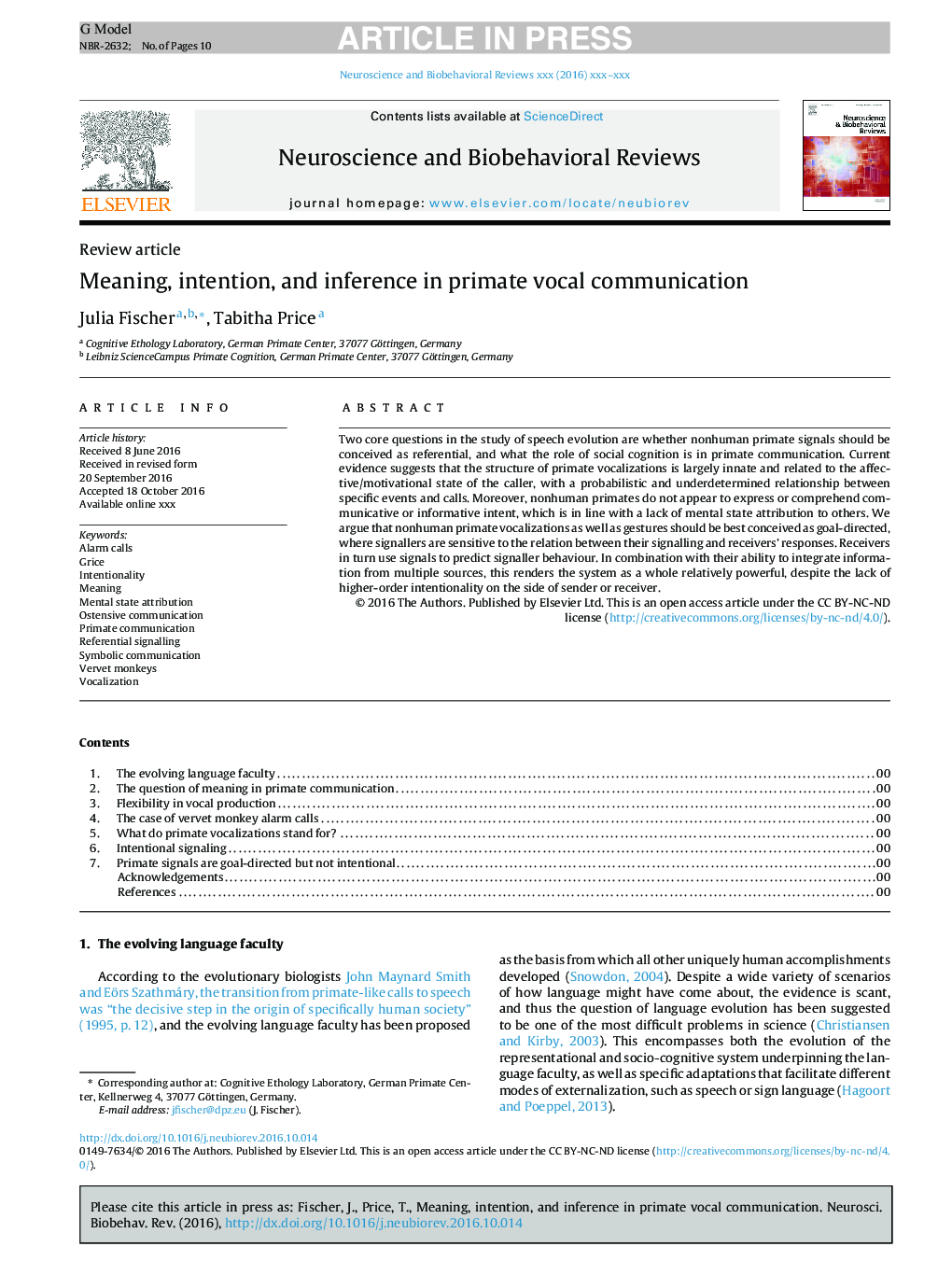| Article ID | Journal | Published Year | Pages | File Type |
|---|---|---|---|---|
| 7302549 | Neuroscience & Biobehavioral Reviews | 2017 | 10 Pages |
Abstract
Two core questions in the study of speech evolution are whether nonhuman primate signals should be conceived as referential, and what the role of social cognition is in primate communication. Current evidence suggests that the structure of primate vocalizations is largely innate and related to the affective/motivational state of the caller, with a probabilistic and underdetermined relationship between specific events and calls. Moreover, nonhuman primates do not appear to express or comprehend communicative or informative intent, which is in line with a lack of mental state attribution to others. We argue that nonhuman primate vocalizations as well as gestures should be best conceived as goal-directed, where signallers are sensitive to the relation between their signalling and receivers' responses. Receivers in turn use signals to predict signaller behaviour. In combination with their ability to integrate information from multiple sources, this renders the system as a whole relatively powerful, despite the lack of higher-order intentionality on the side of sender or receiver.
Keywords
Related Topics
Life Sciences
Neuroscience
Behavioral Neuroscience
Authors
Julia Fischer, Tabitha Price,
